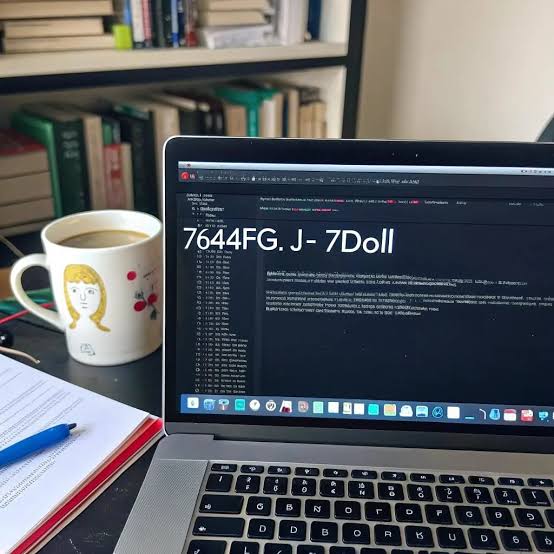Introduction
You’re in the middle of an important task when suddenly, the error 7644fg.j-7doll code pops up. Frustrating, right? You’re not alone—many users have reported running into this cryptic error. But don’t worry, we’ve got you covered!
In this guide, we’ll break down:
- What error 7644fg.j-7doll code means
- Why it occurs
- Simple and effective fixes
By the end, you’ll be back to using your device smoothly without pulling your hair out. Let’s get started!
What Is the Error 7644fg.j-7doll Code?
This error is commonly associated with software or system malfunctions that prevent a program or device from functioning properly. While the exact cause can vary, it typically appears in one of these scenarios:
- Software conflicts
- Corrupt system files
- Outdated drivers
- Network connectivity issues
The error might display a message like:
“An unexpected error (7644fg.j-7doll code) has occurred. Please try again later.”
That’s not very helpful, is it? Let’s break it down further.
Common Causes of Error 7644fg.j-7doll Code
Before we jump into fixing it, understanding why it happens can save time. Here are the most common reasons:
1. Software Conflicts
If two or more programs are trying to access the same resources, this error might pop up. This is common when you install new software or update existing ones.
2. Corrupt or Missing System Files
System files can get corrupted due to:
- Improper shutdowns
- Malware or viruses
- Failed software updates
3. Outdated or Incompatible Drivers
If your drivers are out of date, especially graphics, network, or chipset drivers, they may not communicate properly with your system, triggering this error.
4. Network Issues
A weak or unstable internet connection can cause this error if a program relies on online resources.
5. Hardware Failures
In rare cases, hardware failures—like a faulty RAM or hard drive—could be behind the issue.
How to Fix Error 7644fg.j-7doll Code (Step-by-Step Guide)
Step 1: Restart Your Device
Simple, but effective! A restart can clear temporary glitches and reset system processes.
- Save your work.
- Restart your device.
- Check if the error still appears.
If restarting doesn’t work, move on to the next fix.
Step 2: Check for Software Conflicts
If the error appeared after installing or updating software, try these steps:
- Uninstall Recently Installed Programs:
- Open Control Panel > Programs & Features
- Find the newly installed program
- Click Uninstall
- Restart your device and see if the error persists.
Step 3: Scan and Repair Corrupt System Files
Windows users can use the System File Checker (SFC) to repair missing or damaged files.
- Open Command Prompt as Administrator
- Type: shCopyEdit
sfc /scannow - Press Enter and wait for the process to complete.
- Restart your computer.
This should fix any system file corruption that might be causing the error.
Step 4: Update Drivers
Outdated drivers can trigger this error, so make sure they’re up to date.
- Press
Windows + Xand select Device Manager - Locate the affected drivers (e.g., Display Adapters or Network Adapters)
- Right-click and choose Update Driver
- Select Search automatically for drivers
- Restart your computer after updates
For Mac users, ensure that your macOS is up to date via System Preferences > Software Update.
Step 5: Check Network Connection
If the error is linked to a network-related issue:
- Restart your Wi-Fi router
- Run Windows Network Troubleshooter
- Reset your Network settings:
- Open Command Prompt (Admin)
- Type the following commands one by one, pressing Enter after each: shCopyEdit
netsh int ip reset netsh winsock reset ipconfig /flushdns - Restart your device
Step 6: Perform a Clean Boot
If a background process is causing the error, a clean boot can help identify it.
- Press
Windows + R, type msconfig, and hit Enter - Go to the Services tab and check Hide all Microsoft services
- Click Disable All, then go to the Startup tab
- Click Open Task Manager, and disable all startup items
- Restart your computer
If the error disappears, re-enable startup programs one by one to identify the culprit.
Step 7: Check for Malware or Viruses
Malware can corrupt system files, causing this error. Run a full system scan using:
- Windows Defender (
Windows Security > Virus & threat protection > Full scan) - A trusted third-party antivirus
Remove any threats found and restart your computer.
Step 8: Restore Your System
If none of the above solutions work, try System Restore to revert to a previous stable state.
- Press
Windows + R, type rstrui, and hit Enter - Select a restore point before the error occurred
- Follow the prompts to restore your system
This can undo recent system changes that may have triggered the error.
Conclusion
The error 7644fg.j-7doll code can be annoying, but it’s not impossible to fix! Most users can resolve it by restarting, updating drivers, checking for software conflicts, and scanning for corrupt files.
If all else fails, restoring your system might be the best solution.
FAQs (Frequently Asked Questions)
1. What is the error 7644fg.j-7doll code?
It’s a system error that can occur due to software conflicts, corrupted files, outdated drivers, or network issues.
2. Can this error cause data loss?
Not directly, but if it leads to system crashes or freezes, you might lose unsaved work.
3. How do I prevent this error in the future?
- Keep your software and drivers updated
- Perform regular virus scans
- Shut down your device properly
4. Should I reinstall Windows if I keep seeing this error?
Only as a last resort. Try all troubleshooting steps before considering a fresh installation.





